But before you start dreaming of those animals. There are several critical factors to consider, ensuring both you and your goats are set up for success. Let me guide you through these essential steps with a touch of personal experience and emotion, because, trust me, becoming a goat parent is heartwarming and also a hard journey.
Before You Bring Home a Goat: What You Need to Know?
Understanding Your Why
Before you bring the goat(s) home, you must first determine their role on your ranch. Having this clearly spelled out ahead of time will help you stay focused on the proper goals when they come to your location. Let me clarify.
If you want meat goats, for example, knowing that their ultimate goal is to provide food for your table makes a huge difference when it comes time to cull them.
If you have slow-growing, light-muscled babies, you are unlikely to produce animals that are ‘ideal’ for meat production.
That being said, perhaps your purpose is simply to have goats as pets. If this is the case, tiny, narrow-built animals may not be a problem. Whether it’s for milk, meat, fiber, or simply as pets, the purpose will significantly influence the breed and care requirements of your goats.
Quick Fact: Did you know that Nigerian Dwarf goats are a popular choice for small-scale dairy production because of their high-quality milk?
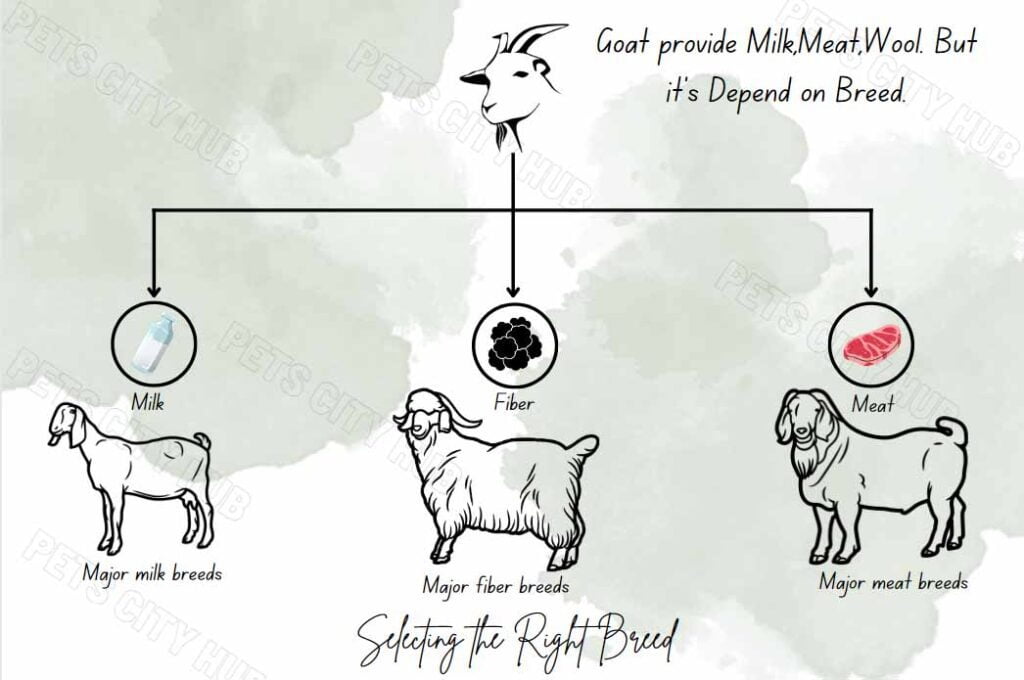
Selecting the Right Breed
Once you’ve determined your ‘why’, it’s time to choose your ‘who’. Different breeds have unique demands, temperaments, and care requirements. If you have limited room, a smaller breed such as the Pygmy goat may be the best option. If you want to produce wool, however, the Angora goat is the way to go.
Meat
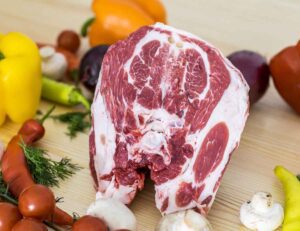 For meat, you should be considering which have high growth rate and bigger muscle mass.
For meat, you should be considering which have high growth rate and bigger muscle mass.
Not that extreme but also bigger muscle and body growth.
Also, the cost of these is huge so pick your goat carefully. An animal that grows in 8 months is going to cost less than an animal that grows in 12 months, that’s just a basic thing to understand.
They are powerfully muscled animals, which appeals to commercial producers wishing to cross them with one of the other major meat breeds. Because the ‘fainting’ gene is inherited, it hardly appears in hybrid crossings. Let me give you some meat goat examples.
Boer Goat: Boer goats, which originated in South Africa, are well-known for their remarkable meat characteristics. They have a strong development rate and outstanding carcass traits, making them a popular choice among meat producers. Boer goats are easily identified by their white bodies and unique brown heads. They also have a calm nature, making them simpler to train than other breeds.
Kiko Goat: Kiko goats were developed in New Zealand with the goal of increasing hardiness and production in tough environments. The breed’s name “Kiko” translates to “meat” in Māori. These goats are noted for their excellent foraging ability and low care requirements. Kiko goats are hardy, tenacious, and can thrive on minimal fodder, making them exceptional for low-input farming systems.
Savannah Goat: The Savannah goat is another meat breed that originated in South Africa. They are particularly known for their disease resistance and capacity to adapt to changing environmental conditions. Savannah’s are mostly white, with a silky, short coat. This breed is valued for its ability to mature swiftly and generate high-quality meat.
Myotonic Goat: The Myotonic breed, also known as the Tennessee Fainting Goat, suffers from myotonic congenital, a rare illness that causes them to stiffen or “faint” when frightened. Aside from this peculiar characteristic, they are medium-sized, muscular animals with a greater muscle-to-bone ratio, making them good meat producers. Myotonic are also recognized for their calm demeanor and manageability.
Milk
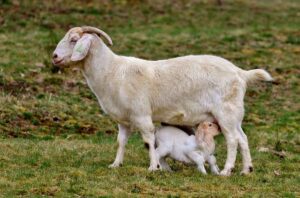 For milk, checking the father and mother of the baby goat is a must, the record for them is how good their milking trait affects their children’s.
For milk, checking the father and mother of the baby goat is a must, the record for them is how good their milking trait affects their children’s.
My genetic milking ability comes from my parents. So emphasizing on that part can give us good results.
Nubian Goat: Their ancestors are from the Middle East, making them heat tolerant. They have big size and good gentle personalities making them easier to milk. They also serve as meat goats sometimes because of their large body.
Nigerian Dwarf Goat: They are very small compared to other goats, making them quite a popular show for kids. For the size, they are good for milking.
Saanen Goat: They are heavy milkers, and for their large size they are good in cold climate conditions.
Fiber Goats
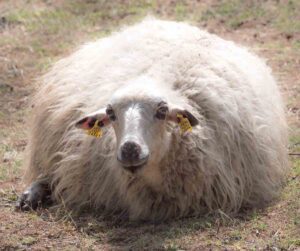 Angora goats are selectively bred for the purpose of mohair production, with the capability of being sheared biannually, resulting in an average yield of slightly more than 5 pounds (2.27 kg) of mohair per shearing session.
Angora goats are selectively bred for the purpose of mohair production, with the capability of being sheared biannually, resulting in an average yield of slightly more than 5 pounds (2.27 kg) of mohair per shearing session.
One drawback of this particular breed is that they have a propensity for birthing single offspring rather than twins or triplets. Additionally, they lack the robustness characteristic of other goat breeds and necessitate increased shelter and care to safeguard against the elements.
Cashmere goats differ from Angora goats as they are sheared once annually and yield around 2.5lbs of fleece per shearing session.
Home Sweet Home: Fencing and Shelter
Having a safe and comfortable home is important. Fencing helps protect your home. It acts as a barrier to keep people and animals out. Fencing can also make your home look nicer. Shelters, like a roof over your home, provide protection from the weather. They keep you dry and warm. Both fencing and shelters help make your home a cozy, safe place to live.
Creating a safe and comfortable place for your goats is critical. Good fencing is not just for their safety — it also stops them from wandering off. Goats are curious and can easily escape if given the chance. From my experience, strong fencing is essential to keep these adventurous animals contained.
For shelter, goats need a cozy place. This protects them from the weather without drafts. Providing good shelter is not just about comfort. It’s also about the goats’ health and well-being.
As you set up their living area, remember, you’re creating a home where your goats will spend a lot of their time. It’s like setting up a room for a new family member. You want to make it as welcoming and secure as possible. This setup will not only make your goats happier but will also make your life much easier in the long run.
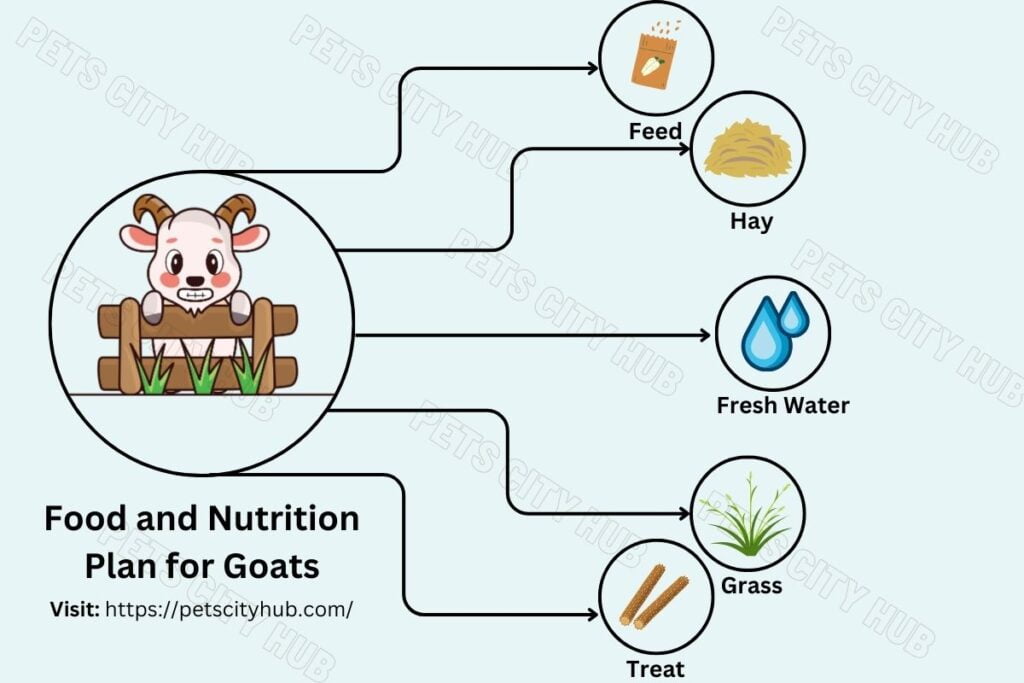
On the Menu: Proper Nutrition
Now, let’s talk about what’s on the menu for your goats. What you feed them is super important—it’s like fuel for their bodies and affects everything from their energy levels to the quality of the milk or meat they produce.
So, here’s the deal: a good diet for goats mainly consists of forages like hay. Think of it as their main course, like a big, leafy salad. But they also need some grains and minerals to fill in the gaps, kind of like adding some tasty treats to their meal.
Remember, just like us, each goat is different. They have their own preferences and nutritional needs based on things like their age, size, and what they’re doing—whether they’re giving milk, growing up, or just hanging out. So, it’s essential to tailor their diet to suit them individually.
Making sure your goats get a balanced diet is key to keeping them healthy and happy. It’s like making sure we eat our veggies and protein—keeping everything in balance keeps us feeling our best. So, pay attention to what you’re feeding your goats, and they’ll thank you with their bouncy energy and maybe even some delicious milk or meat!
Essential Supplies and Equipment
Before your goats arrive, you’ll want to make sure you have everything ready.
Think of it like getting the nursery ready before bringing home a newborn—except this time, it’s for your caprine buddies!
General Supplies
- Hoof trimmers: Keep those goat hooves neat and tidy.
- File: Smooth out any rough edges after trimming.
- Feeders or trough (for grain): Everyone needs a designated dining spot!
- Hay feeder: A must-have for serving up their favorite hay.
- Water trough: Keep them hydrated with a constant supply of fresh water.
- Lead or halter: Handy for walks or moving your goats around.
- Curry comb or brush: Keep their coats looking fresh and clean.
- Medical supplies: Be prepared for bumps and scratches with gauze, disinfectant, vet wrap, and gloves.
- Kidding supplies: Have everything ready for birthing time, including colostrum, bottles, towels, iodine, and scissors.
Dairy Specific Supplies
- Filter for milk: Keep it clean and fresh.
- Stainless steel container/pail: Perfect for collecting that liquid gold.
- Airtight vessels: Store that precious milk safely in the fridge.
- Milk stanchion: Makes milking time a breeze.
- Teat dip or wipes: Keep those tears clean and healthy.
- Moisturizing cream: Soothe and protect those hard-working udders.
- Strip cup: Check for any signs of mastitis before milking.
Fiber Specific Supplies
- Shears: Electric or hand, for keeping your fiber goats looking sharp.
- Bag or container: Store that beautiful fiber until you’re ready to use it.
Having all these supplies ready to go will make life with your goats a lot easier. So, stock up, set up, and get ready for some goat care.
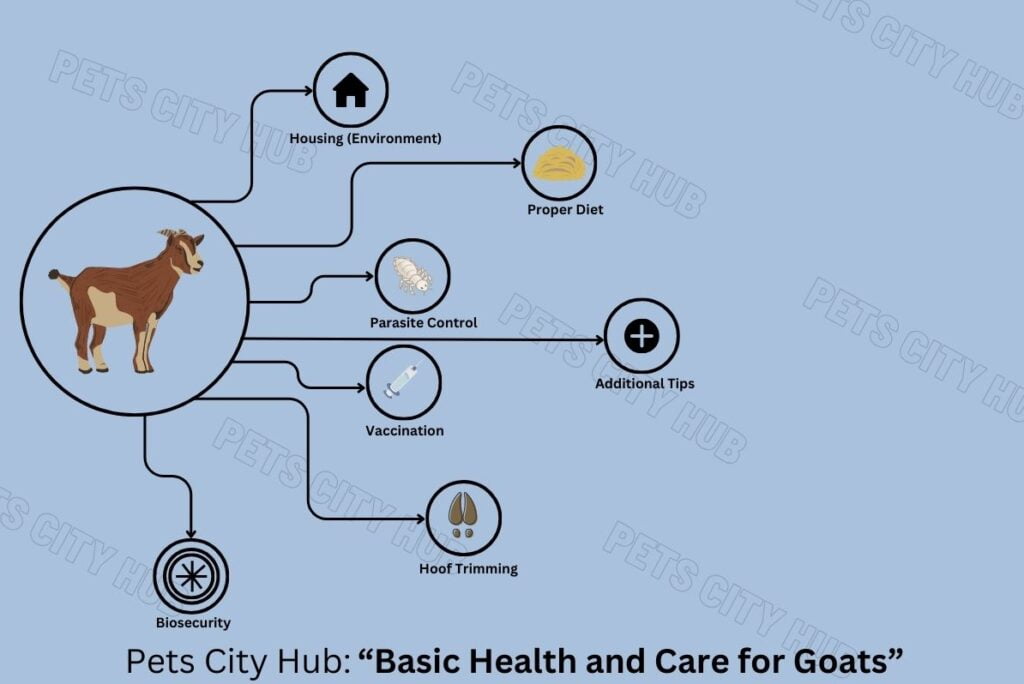
Stay Informed on Health Issues
Keeping your goats healthy is top priority. While goats are generally hardy creatures, they can still face some health challenges. Let’s dive into a few more potential issues and how to handle them, because I want you and your goats to have smooth sailing!
Parasites are one of the biggest foes of goat health. They can cause problems like anemia, weight loss, and diarrhea.
Common parasites include:
- Internal Parasites (Worms): These pesky critters can wreak havoc on your goats’ digestive system. Look out for symptoms like rough coats, weight loss, and pale gums.
- External Parasites (Lice and Mites): These little pests can cause itching, hair loss, and skin irritation in your goats. Regular grooming and using appropriate treatments can keep them at bay.
Then there’s hoof issues, as I mentioned earlier. But there’s more to it than just trimming! Goats can also suffer from conditions like:
- Foot Rot: This bacterial infection can cause painful swelling and lameness. It’s often caused by standing in wet, muddy conditions. Good hoof care and keeping their living area dry can help prevent it.
- Scald: Similar to foot rot, scald is caused by bacteria and leads to inflammation and soreness between the toes. Proper hygiene and dry living conditions are key for prevention.
- Coccidiosis: This is a common protozoal infection in goats, especially in young ones. It can cause diarrhea, dehydration, and even death if not treated promptly. Keeping living areas clean and practicing good sanitation can help prevent its spread.
- Pneumonia: Just like us, goats can get respiratory infections. Poor ventilation, drafts, and stress can all contribute to pneumonia. Keeping their living area clean and dry, and providing good ventilation can reduce the risk.
Remember, prevention is key when it comes to keeping your goats healthy. That means regular check-ups, vaccinations, and good management practices. And of course, if you notice anything unusual with your goats, don’t hesitate to call your vet.
Quick Fact: Regular hoof trimming is like giving your goats a pedicure—it keeps them comfortable and prevents problems down the road. So, grab those clippers and give those hooves some love!
Daily Care and Realistic Expectations
Finally, consider the daily time commitment. Goats require regular feeding, clean water, and a clean living environment. They also need social interaction and mental stimulation. If you’re not ready for early morning feedings or regular playtime, goats might not be the right fit for your lifestyle.
Bringing goats into your life is not a decision to be made lightly, but it is one that can bring immense joy and satisfaction. You’re not just buying livestock; you’re expanding your family.













